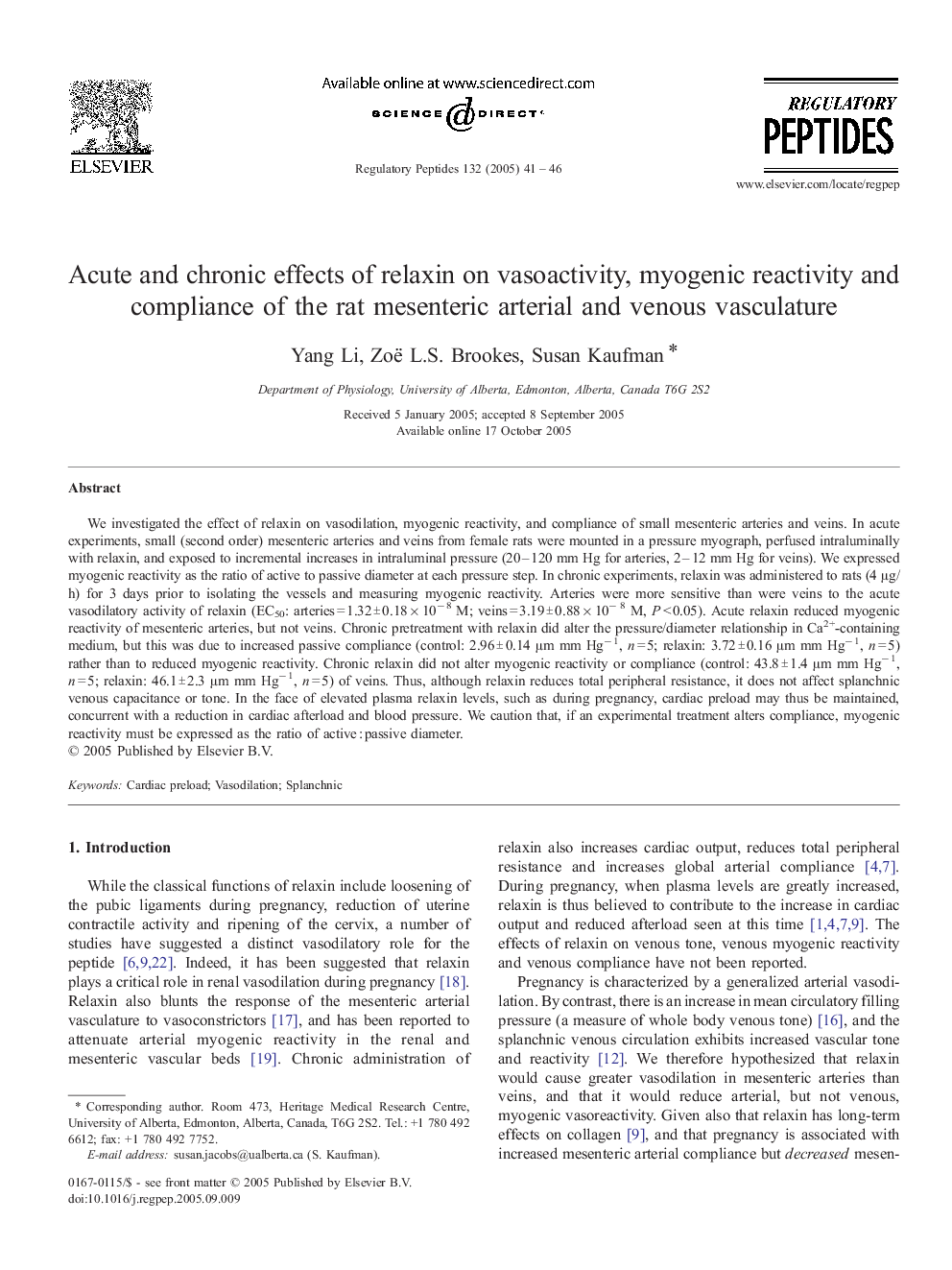| Article ID | Journal | Published Year | Pages | File Type |
|---|---|---|---|---|
| 9894348 | Regulatory Peptides | 2005 | 6 Pages |
Abstract
We investigated the effect of relaxin on vasodilation, myogenic reactivity, and compliance of small mesenteric arteries and veins. In acute experiments, small (second order) mesenteric arteries and veins from female rats were mounted in a pressure myograph, perfused intraluminally with relaxin, and exposed to incremental increases in intraluminal pressure (20-120 mm Hg for arteries, 2-12 mm Hg for veins). We expressed myogenic reactivity as the ratio of active to passive diameter at each pressure step. In chronic experiments, relaxin was administered to rats (4 μg/h) for 3 days prior to isolating the vessels and measuring myogenic reactivity. Arteries were more sensitive than were veins to the acute vasodilatory activity of relaxin (EC50: arteries = 1.32 ± 0.18 Ã 10â 8 M; veins = 3.19 ± 0.88 Ã 10â  8 M, P < 0.05). Acute relaxin reduced myogenic reactivity of mesenteric arteries, but not veins. Chronic pretreatment with relaxin did alter the pressure/diameter relationship in Ca2+-containing medium, but this was due to increased passive compliance (control: 2.96 ± 0.14 μm mm Hgâ 1, n = 5; relaxin: 3.72 ± 0.16 μm mm Hgâ 1, n = 5) rather than to reduced myogenic reactivity. Chronic relaxin did not alter myogenic reactivity or compliance (control: 43.8 ± 1.4 μm mm Hgâ 1, n = 5; relaxin: 46.1 ± 2.3 μm mm Hgâ 1, n = 5) of veins. Thus, although relaxin reduces total peripheral resistance, it does not affect splanchnic venous capacitance or tone. In the face of elevated plasma relaxin levels, such as during pregnancy, cardiac preload may thus be maintained, concurrent with a reduction in cardiac afterload and blood pressure. We caution that, if an experimental treatment alters compliance, myogenic reactivity must be expressed as the ratio of active : passive diameter.
Related Topics
Life Sciences
Biochemistry, Genetics and Molecular Biology
Biochemistry
Authors
Yang Li, Zoë L.S. Brookes, Susan Kaufman,
